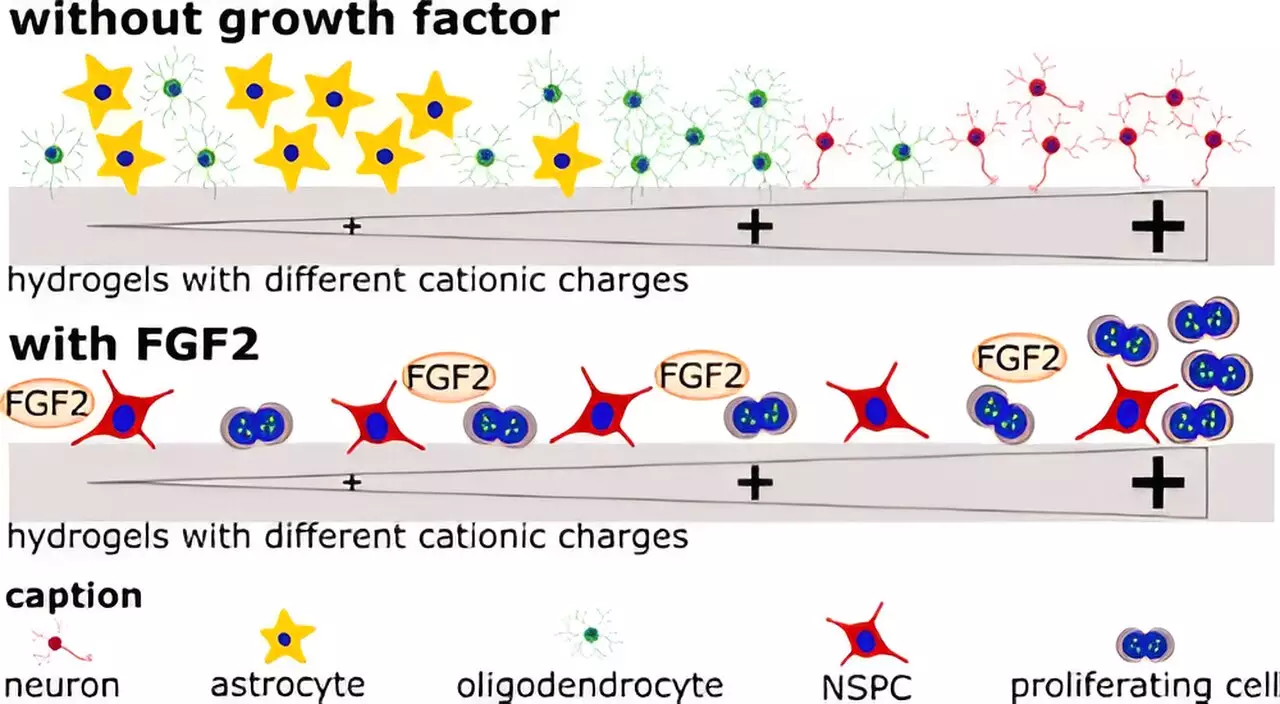Injuries to the brain or spinal cord often result in fluid-filled cavities and scars that hinder tissue regeneration, making it difficult for nerves to heal properly. Seeking a solution to this problem, a team of researchers from Ruhr University Bochum and TU Dortmund University in Germany has developed an artificial cell environment that shows promise in promoting the regeneration of nerves. By creating an environment that provides neural stem cells with optimal conditions for growth and differentiation, the researchers aim to address the challenges associated with current medical research on nerve regeneration.
Dr. Kristin Glotzbach and Professor Andreas Faissner, along with their colleagues, utilized positively charged hydrogels to cultivate neural stem cells from mouse embryonic brains in their study. The unique property of these hydrogels lies in their ability to promote cell survival and growth by offering a surface with a positive charge that mimics the natural environment of the brain, where cells adhere well to positively charged substrates. Through their experiments, the researchers found that the strength of the positive charge on the hydrogels could be adjusted to influence the fate of the stem cells.
The findings of the study revealed that stem cells cultured on hydrogels with a high positive charge tended to develop into nerve cells, while those on hydrogels with a lower positive charge predominantly differentiated into glial cells. This ability to control the differentiation of stem cells into specific cell types such as nerve cells and glial cells could prove to be a significant breakthrough in nerve regeneration research. According to Dr. Glotzbach, this flexibility in directing cell differentiation is crucial for replacing different cell types based on the specific needs of the injury or disease.
In their experiments, the researchers also explored the effects of adding the growth factor FGF2 to the positively charged hydrogels. While the growth factor increased cell survival and division rates, it also slowed down the process of differentiation into nerve and glial cells. To further enhance the artificial cell environment, the researchers plan to incorporate peptides or components of extracellular matrix molecules into the hydrogels in future studies. By simulating the natural environment of the cells more effectively, they aim to optimize the conditions for nerve regeneration.
Looking ahead, the research team intends to expand their investigation by experimenting with three-dimensional hydrogels that could potentially fill cavities resulting from brain injuries. By exploring new approaches to creating an artificial cell environment that mimics the complexities of the natural brain environment, the researchers hope to advance the field of nerve regeneration and contribute to the development of innovative treatments for injuries and diseases affecting the nervous system.
The study conducted by the researchers from Bochum and Dortmund demonstrates the potential of using an artificial cell environment to promote nerve regeneration through the manipulation of stem cell growth and differentiation. By harnessing the unique properties of positively charged hydrogels and exploring novel strategies for enhancing cell growth, the research paves the way for future advancements in the field of neurobiology and regenerative medicine.


Leave a Reply